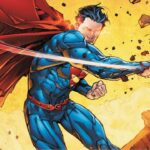The Difference Between “To” and “Too”
“To” and “too” are two of the most commonly used words in the English language, but they are often confused due to their similar pronunciation. While they may sound the same, these two words have distinct meanings and usages. Understanding the difference between “to” and “too” is crucial for effective communication, whether in writing or speech.
The Meaning and Usage of “To”
“To” is a preposition that indicates direction, location, or a recipient. It can also be used as part of an infinitive verb phrase. Here are some common uses of “to”:
- Direction: “I’m going to the park.”
- Location: “The book is on the table next to the lamp.”
- Recipient: “I gave the book to my friend.”
- Infinitive: “I want to learn how to play the guitar.”
“To” is often used with verbs to indicate an action or movement towards a destination. It can also be used to show possession or a relationship between two things.
The Meaning and Usage of “Too”
“Too” is an adverb that has several meanings, including “excessively,” “also,” or “very.” Here are some examples of how “too” is used:
- Excessively: “The soup is too hot to eat.”
- Also: “I want to come to the party too.”
- Very: “The movie was too long.”
“Too” is often used to express that something is more than necessary or desired. It can also be used to indicate that something is in addition to something else.
Expanded Examples of “To” and “Too”
Using “To” in Different Contexts
- Direction:
- “She walked to the library to study for her exam.”
- “He drove to the beach for the weekend.”
- Location:
- “The cat jumped onto the couch next to the window.”
- “Please leave the keys on the table next to the door.”
- Recipient:
- “I sent a letter to my grandmother.”
- “Can you give this gift to your sister?”
- Infinitive Form:
- “I plan to travel to Europe next summer.”
- “He hopes to finish his project by Friday.”
Using “Too” in Different Contexts
- Excessively:
- “The coffee is too hot for me to drink.”
- “She was too tired to continue running.”
- Also:
- “I would like to join the team too.”
- “He enjoys hiking, and I do too.”
- Very:
- “The dress is too beautiful to resist.”
- “That was too funny; I couldn’t stop laughing.”
Common Mistakes
Confusing “To” and “Too”
One of the most common mistakes in writing is confusing “to” and “too.” Here are some examples of incorrect usage and their corrections:
- Incorrect: “I am going too the store.”
- Correct: “I am going to the store.”
- Incorrect: “This task is too hard for me to complete.”
- Correct: “This task is too hard for me to complete.” (This sentence is correct, but it illustrates the correct use of “too” for emphasis.)
- Incorrect: “I want to go too the concert.”
- Correct: “I want to go to the concert.”
Differentiating Between “To” and “Too”
While “to” and “too” may sound the same, they have distinct meanings and usages. Here are some tips to help you differentiate between the two:
- Consider the meaning: If you can replace the word with “also” or “excessively,” use “too.” If the word indicates direction or location, use “to.”
- Look at the part of speech: “To” is a preposition or part of an infinitive verb phrase, while “too” is an adverb.
- Count the number of “o”s: “To” has one “o,” while “too” has two “o”s. This can be a helpful mnemonic device to remember the difference.
Examples of “To” and “Too” in Sentences
Here are some examples of how “to” and “too” are used in sentences:
- “I’m going to the store to buy some milk.”
- “The movie was too long, and I was too tired to stay until the end.”
- “I want to learn how to cook, and my friend wants to learn too.”
- “The cake is too sweet, and there are too many people at the party.”
Frequently Asked Questions (FAQ)
Q1: When should I use “to” in a sentence?A1: Use “to” when indicating direction, location, a recipient, or as part of an infinitive verb phrase.
Q2: When should I use “too” in a sentence?A2: Use “too” when expressing that something is excessively, also, or very.
Q3: Can “to” and “too” be used interchangeably?A3: No, “to” and “too” have distinct meanings and usages. They cannot be used interchangeably in a sentence.
Q4: How can I remember the difference between “to” and “too”?A4: One way to remember the difference is to count the number of “o”s. “To” has one “o,” while “too” has two “o”s.
Q5: Are there any other words that sound similar to “to” and “too”?A5: Yes, “two” is another word that sounds similar to “to” and “too,” but it is a number that indicates quantity.
Conclusion
In conclusion, while “to” and “too” may sound the same, they have distinct meanings and usages. Understanding the difference between these two words is essential for effective communication in English. By considering the meaning, part of speech, and number of “o”s, you can easily differentiate between “to” and “too” and use them correctly in your writing and speech.For more information on the usage of prepositions and adverbs in English, you can refer to the Purdue Online Writing Lab.


